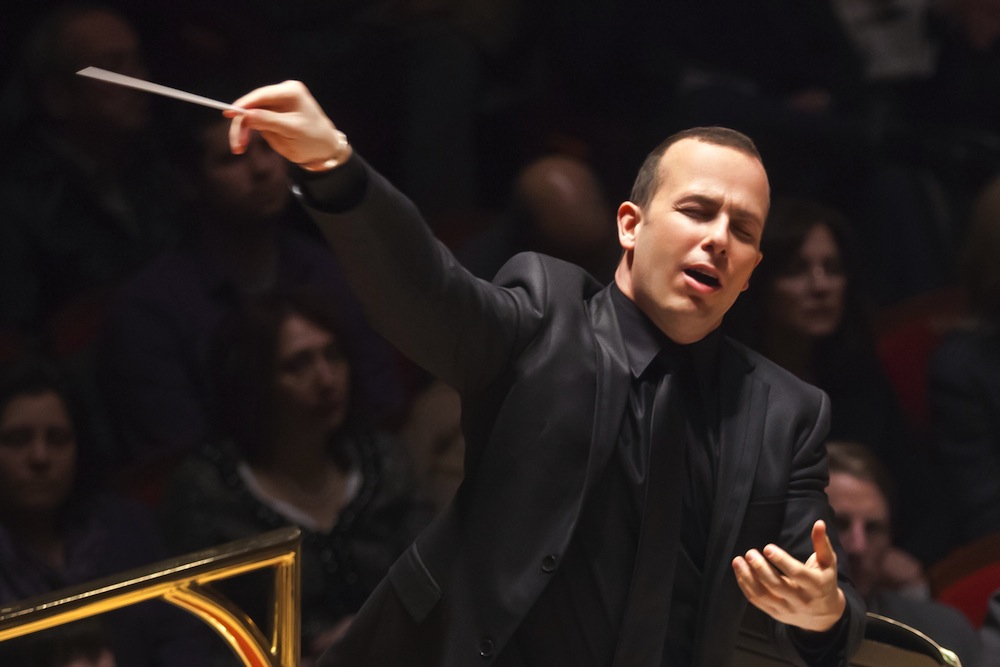Philadelphia Orchestra finally gets to Carnegie Hall and no practice is needed

Yannick Nézet-Séguin conducted the Philadelphia Orchestra Monday night at Carnegie Hall. File photo: Chris Lee
It seems Yannick Nézet-Séguin has already won over New York. He has made a considerable impression in his many appearances at the Metropolitan Opera and Carnegie Hall, including his direction of the Met’s current run of Rusalka, which opened in January.
Two previous Philadelphia Orchestra performances were cancelled due to a strike and an illness. But on Monday, Nézet-Séguin finally made it to Carnegie Hall with his Philadelphians for the first time this season.
The program started with a tumultuous performance of Smetana’s The Moldau—tumultuous in more than one sense. As the title suggests, the piece takes inspiration from the river that runs through Prague, and the woodwind solos at the opening should be serene, visions of stillness in motion. Here that opening was nervous, and metrically uneven, so that it sputtered more than it rippled. But the tumult was there when it was needed, too, as the waters swirled with the orchestra’s sparkling intensity, the winds striving to be heard over the boiling brass.
Radu Lupu joined the orchestra for Bartók’s Third Piano Concerto. At this point, it’s fair to call him a lion of the concert stage, and he played like one—with poise, clarity, and grace. Lupu’s firm but delicate touch instantly produced a glittering sound that sprang out into the hall. This is one of the last pieces that Bartók wrote, but it doesn’t have the pungent dissonance and bitter irony of much of the work that preceded it—it is instead bright and joyous, and so was Lupu’s playing.
Lupu is certainly not afraid of his sustaining pedal, and he used it liberally in the slow movement to create more of that clear, free-ringing sound. The movement is marked Adagio religioso, and there was indeed a reverential quality to it, but also a little bit of jazzy cheek, as he caressed lines with rubato and spiced them with witty articulation. It was luminous.
So was the finale, which was exactly the trouble with it—a reserved Allegro vivace, it was plucky and clean, but too close in character to the other two movements and lacking the requisite fire to be entirely convincing.
“Entirely convincing” is as good a description as any for the account Nézet-Séguin and the Philadelphia Orchestra gave of Dvořák’s Sixth Symphony. Though today it is not in the same stratosphere of popularity as his Ninth or the Cello Concerto, the Sixth is the work that launched Dvořák to fame, and you can hear why—unabashedly capital-R Romantic, it is a superb vehicle for the sort of interpreter that thrives on macro-scale unbridled passion.
Yannick and his orchestra brought in a big, fleshy, up-front sound that filled every corner of the hall. His feel for the piece’s structure was superb, but so was his attention to detail. The precise gestures that he drew were much more than mere flourishes, helping to tease out the character of the music.
The Philadelphia strings are deservedly well-regarded, and under this conductor they sound as powerful and distinctive as ever. They are capable of producing a taut, glossy sound like spun silk, but in the Adagio they broadened their strokes to create a warm, extra-plush texture.
The only movement that did not quite reach its full potential was the third. Dvořák called the movement a Scherzo, but he also called it a Furiant—a Czech dance with fire and bite. If this is a “joke,” it’s a slightly mean-spirited one, and the orchestra’s playing simply wasn’t mean enough. What was needed was more grit, and harder articulation from everyone involved. The disjointed sounds coming from the percussion section did not help.
The fourth movement more than redeemed the third— bouncy and grinning, it still kept a certain majesty. Never quite teetering over the edge of “manic,” the combination of immense size and intense vigor made the finale absolutely thrilling, a rush of adrenaline from its suspenseful beginning to its raucous, breakneck close.
The Philadelphia Orchestra returns to Carnegie Hall February 21 in a program featuring Beethoven’s “Eroica” Symphony, Strauss’s Metamorphosen, and Shostakovich’s Cello Concerto No. 1, performed by Truls Mørk. carnegiehall.org






